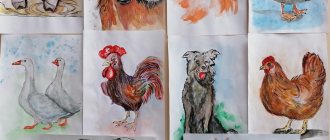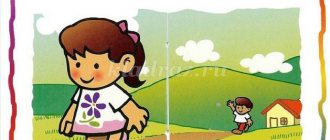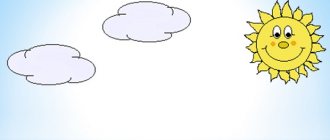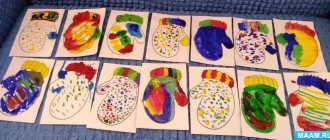Summary of a lesson with children of the second younger group using relaxation exercises.
Lesson with children of the second younger group using relaxation exercises.
Author: Natalya Vladimirovna Tabunshchikova, teacher-psychologist Place of work: MKDOU "Solnyshko", MKDOU "Belochka" No. 62 Description of work: I bring to your attention the development of a lesson aimed at working with children from 3 to 4 years old. The lesson can be conducted either individually or in a group. The development will be useful to educational psychologists working with preschool children in kindergartens, rehabilitation centers, and orphanages. Goals: development of children’s bodily awareness, especially their tactile perception; teach children to relax and concentrate; Progress of the lesson: 1) Game “We say hello in an unusual way” 2) Game “Magic pen”; 3) Game “Exercise for a turtle” 4)) Game-dance to Zheleznova’s song (“we stomp-stomp with our feet…”) 5) Ritual – farewells 1) Game “We say hello in an unusual way” The psychologist says: “Let’s try to experience new emotions, and At the same time, we’ll also master unconventional greetings. You can come up with them yourself and show them to the whole group. To begin with, I offer several greeting options: the back of the hand, feet, knees, shoulders, foreheads, etc. 2) Magic pen Description. This game gives children a great opportunity to relax and concentrate. Materials: You will need a nice big feather. You can also use your own fingertips. Instructions for children. Sit in a circle on the floor. I have a magic pen in my hands, with which I will touch different places on your body. It is pleasant to the touch, and its touch will give you cheerfulness and fun. I will approach each of you in turn. The child I stop next to closes his eyes. Then I will gently touch his face, neck, palm or arm with a magic feather. Without opening his eyes, the child should touch the place touched by the pen with his index finger. After that, he can open his eyes, and the magic feather will touch another child.
3) Game “Exercise for the turtle” Description. This is a very short relaxing exercise for young children, the main action of which is aimed at the muscles of the shoulders and back of the head. Instructions for children. (Children are sitting on the floor.) Imagine that you are turtles. You lie on the sand and bask in the sun. You heard a loud noise and hide in your shell. You tighten your legs and arms, hide your head and close your eyes. Now it has become calm again, and you slowly stretch your neck out of the shell. Raise your head slowly up and stretch your neck. Look around with your turtle eyes: make sure you are completely safe. Now you can lie on the sand or crawl again. I'll clap my hands. When you hear this loud sound, quickly hide in the shell... (Clap loudly.) And now everything is calm again, and you can slowly get out of the shell, stretch your neck, lower your shoulders and inspect the space around you.
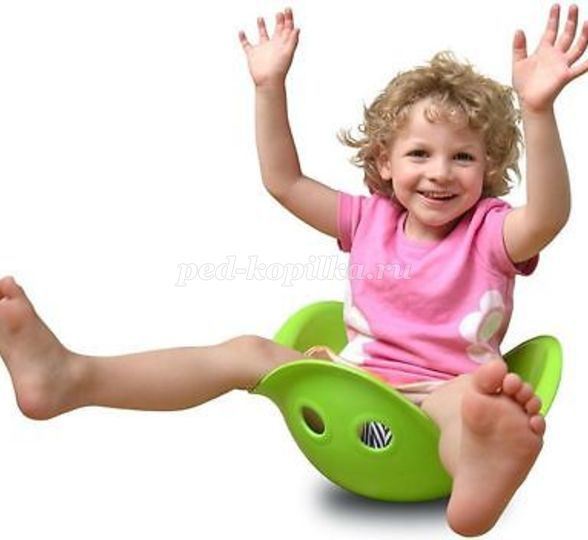
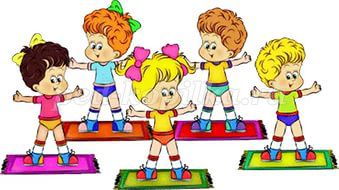
We recommend watching:
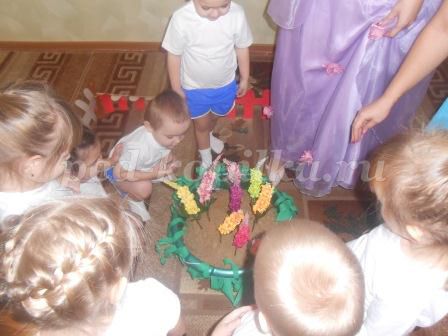
Summary of GCD in the 2nd junior group "The first step on the path to health" Summary of GCD in the 2nd junior group on the topic: Wild and domestic animals Summary of a mathematics lesson in the 2nd junior group on the fairy tale "Kolobok" Summary of a theatrical lesson in the second junior group
Similar articles:
Short-term project at a preschool educational institution on the topic “Theatre. Music" Second junior group
Lesson notes for the 2nd junior group of kindergarten. Profession cook
Summary of lessons in kindergarten in the 2nd junior group. Doctor's profession
Summary of a lesson on social and communicative development in the junior group of kindergarten
Summary of an open lesson by a teacher-psychologist in the middle group “Friendship begins with a smile”
Transcript
1 Summary of an open lesson by a teacher-psychologist in the middle group “Friendship begins with a smile” Goal: forming friendly relationships in the group, uniting the children’s team, the ability to speak out. Objectives: 1. To generalize and expand children’s knowledge about such concepts as “friend”, “friendship”. 2. Introduce children to human emotions and qualities. 3. Development of empathy. 4. Introduce children to the rules of friendly relations. 5. Teach children to evaluate their actions and the actions of other people. 6. Develop communication skills. 7. Teach how to work in a team. Materials: Pictures depicting a sad and cheerful face, pictures of a bear, a bunny, a hedgehog, a swing. Pictures of fairy-tale characters (positive and negative), small smiling emoticons cut out of yellow paper (according to the number of children), one large smiling emoticon, a picture of “house”. Progress of the lesson: Children sit on chairs in a semicircle. Psychologist: Good afternoon, guys! I suggest you greet each other, turn to the neighbor on your right, smile, call him by name and say hello. 1. Conversation about friendship. The psychologist asks the children questions, the children answer them. Psychologist: What do you think friendship is? Do you have friends? Why do we need friends? Who can you be friends with? What should a true friend be like? Which guys do you want to be friends with, and which ones do you not want to? Psychologist: Friendship is when people want to be together, when they play together, communicate, and don’t quarrel. Friendship is the smiles of friends. Friends are people with whom we enjoy playing. Friendship is when you know how to come to an agreement without shouting and quarreling; share toys, speak politely and not be rude; be attentive (caring) to a friend; be able to sympathize with a friend. If a friend is happy, then rejoice with him; if there is trouble, then be sad together. Raise your hands if you have friends. (Children raise their hands). 2. Conversation “Mood”. The psychologist shows the children 2 pictures (one with a sad face, the other with a happy face). The psychologist asks the children questions: Guys, look, are these little people the same? What is the difference? What's your mood today? Why are you happy and happy? Which of these little men do you think has many friends? Why do you think so? Psychologist: That's right, the little man is in a good mood because he has many friends. That's why he smiles. 3. Game “My Mood”.
2 The psychologist covers his face with his palms, invites the children to do the same, then asks the children to open their faces and show: What kind of face do you have when you: - Ate chocolate. — We tried lemon. - We saw a friend. - Mom is upset. — A friend gave you a gift. - You were punished. — You and your friends are playing while walking. - When a friend smiled at you. Psychologist: Well done! You see how happy everyone’s faces were when I asked questions about friends, because friendship begins with a smile, with a good mood. 4. Gloomy bear. Psychologist: And now guys, I’ll introduce you to the bear. The psychologist takes out a picture of a bear. Psychologist: A gloomy playful bear walks through the forest, not noticing anyone, and sings a song. He growls, he grumbles, he stomps his feet. Why is our bear evil? We don’t know ourselves? The psychologist asks the children questions: Guys, why do you think Mishka is gloomy and angry? Why doesn't anyone want to be friends with him? How can you help the bear? Guys, do you want to teach Mishka how to be friends? 5. Game “Good - bad”. To begin with, we will play the game “Good is bad” with you. Let's listen to the rules of the game. I will pronounce people's actions. If the deed is good, clap your hands; if it is bad, keep silent. (The psychologist names actions: “quarrel, help others, fight, make peace, greet each other, brag, ask for forgiveness, be greedy, share, call names, say nice words, be polite, be rude, give in”). 6. Rules of friendship. Psychologist: Guys, let's introduce the bear to the rules of friendship. How to be friends properly? Children: (children's answers). Psychologist: Guys, does it ever happen that you quarrel? What causes quarrels most often? Children: (children's answers). Psychologist: So, the most common cause of quarrels is when you cannot share something. I know the story of how Mishka and the hedgehog quarreled. Guys, do you want to hear it? (The psychologist shows pictures of Teddy Bear, a hedgehog and a swing.) Psychologist: In a quiet forest, among the bushes and paths, there lived two friends - Teddy Bear and Hedgehog One day they went for a walk and found a swing in a clearing. The hedgehog stepped towards the swing. Mishka pulled the swing towards him. Mishka: “I’m first!”
3 Hedgehog: “No, me!” Friends are not inferior to each other. Mishka was offended: “So you are a Hedgehog, As a friend to me, you are not at all good!” The psychologist asks the children questions: What happened that the friends couldn’t share? Why did Mishka decide not to be friends with the Hedgehog? Guys, what do you think, is quarreling with a friend good or bad? Why is it bad to quarrel? Psychologist: Remember, Mishka, the first rule of friendship: Don’t quarrel with your friends, try to play together. (the psychologist shows sign 1). Psychologist: How to reconcile Mishka and Hedgehog? What if there is only one swing, but two friends? Children: (children's answers). Psychologist: Let me tell the story again, well, with a cheerful, good ending, when Mishka and the hedgehog agreed. In a quiet forest, among the bushes and paths, lived two friends, Mishka and Hedgehog. One day they went for a walk and found a swing in the clearing. The hedgehog stepped towards the swing. Mishka pulled the swing towards him. Mishka said: “I’ll rock you, we’re friends with you, Hedgehog.” Psychologist: So, what should you do to avoid quarreling? Children: Give in, share. Psychologist: Bear, remember the second rule of friendship: Be able to negotiate. Know how to give in. (The psychologist shows sign 2). Guys, when do you give in to your friends? Children: (children's answers) Dynamic pause “If there is a good friend” The mood has fallen, the matter is falling out of hand (children stand facing each other, hands up, gradually lower their hands) But not everything is lost (they shake their fingers at each other) If there is a good one friend (clap their hands) Let's handle the matter together (hold hands) Let's breathe a sigh of relief (sigh) Raise our spirits (raise our hands up) Let's shake off all the grievances (shake off the dust. Smile at each other). 7. Psychologist: Guys, I’ll tell you another story now, listen carefully. One day the clever Bunny was carrying a basket full of carrots. The basket was not small, but very, very heavy. Mishka walked towards him. The bunny asks: “Help me carry the basket!” “Carry your basket yourself, I went to look for raspberries.” Psychologist: What would a friend do in this situation?
4 Children: I would help. Psychologist: Bear, remember the third rule of friendship: Help a friend (Psychologist shows sign 3). Psychologist: Guys, do you help your friends? How do you help? Psychologist: These are the simple rules of friendship we taught Mishenka. Psychologist: Guys, let's remind Mishka once again what the rules of friendship are: Children: 1. Don't quarrel with friends, play together. 2. Be able to negotiate, give in, share. 3. Help a friend. Psychologist: And you guys, never forget these rules! What other rules would you guys add here? Children: (children's answers). Be able to ask for forgiveness if you were wrong, be polite, etc. 8. Game “Yes-yes-yes, no-no-no.” Psychologist: Guys, do you know what real friends should be like? We'll check this now. I will ask questions, and you answer: “yes, yes, yes” or “no, no, no.” Shall we try? Will we be strong friends? Should we value our friendship? Will we learn to play? Shall we help a friend? Need to piss off a friend? No no no! How about giving a smile? Should you offend a friend? No no no! Well, what about resolving disputes? Shall we drink tea with friends? Will we be strong friends? 9. Game “Make friends with a fairy-tale hero.” Psychologist: Guys, I will take turns showing you pictures of characters from different fairy tales and cartoons. All of them have different characters and actions. If you would like to be friends with the hero I will show, raise your hand; if you would not like to, do not raise it. The psychologist shows pictures with characters one by one (Pinocchio, Baba Yaga, Leopold the cat, Koschey the Immortal, Gorynych the serpent, Luntik). After showing each picture, the psychologist asks the children why they would/would not want to be friends with the fairy-tale hero.
5 Psychologist: Why didn’t you choose these heroes? (shows pictures of negative characters that the children did not choose). Children: (children's answers). Psychologist: But no one wanted to be friends with evil, greedy, unfriendly fairy tale characters. In order for people to want to be friends with us, we need to have good qualities. Be kind, cheerful, honest, ready to help. But you can also make friends with negative characters, but you need to teach them to be kind, not to do bad things, and teach them the rules of friendship. 10. Game “Give a smile.” The psychologist shows the children a big smiling emoticon. Psychologist: You need to take turns passing the emoticon to your neighbor with the words: “I like being friends with you because you..(what?) and name the neighbor’s quality.” Psychologist: Well done guys, I learned that you are all kind, polite, beautiful, cheerful. This means that you know how to be friends, and there is a smile in your group. 11. House of Friendship. The psychologist gives each of the children a small emoticon and invites everyone to paste their emoticon onto a common sheet of paper on which a house is drawn. Psychologist: This is the kind of house of friendship you and I have, where everyone is next to each other, smiling and everyone is in a good mood. I will leave this house in your group so that it reminds you of our activity and the rules of friendship. 12. Farewell ritual. Guys, friendship begins with a smile. Today we will say goodbye to you with a smile and a hug. Psychologist: “Goodbye, guys!
6
Summary of a lesson by a teacher-psychologist with young children
Summary of educational activities with young children. The sun is radiant
Progress of the GCD:
Greeting (conducted by an educational psychologist): Hello, golden sun! Hands spread to the sides like the rays of the sun Hello, blue sky! We raise our hands up, straight, Hello, free breeze! Swing your arms from side to side Hello, little friend! Children hug Children sit in a circle. “Morning” by E. Grieg is playing. Listen. The sun appears (group teacher) Teacher-psychologist: The sun is visiting us. In the morning the sun rises. It shines all day long. And, of course, he gets tired - evening comes. When the sun sets across the river, you won’t mind relaxing. The sun needs rest. And night comes. The night will pass. And during the day the sun will be in the sky again. To warm the earth, we need light from the window. M.Druzhinina. Sun (group teacher): I walk around the world. I’m not too lazy to walk and shine. Where there is sun, there is no night. Where the sun is, it’s a clear day! Teacher-psychologist: Hello, hello, sunshine! Shine brighter for us! Help us, sunshine, to grow stronger and grow! Sunny wants to meet you. (Sunny comes up to each child and says hello, taking them by the hands). Guys, let's play with the sun. Exercise “Sun” (collection “Top-clap, kids” by A.I. Burenin). Children sit on their haunches with their palms under their cheeks. This is how the sun rises, Children slowly stand up, raising their hands up. Higher, higher, higher. By night the sun will set. Squat down, palms under the cheek. Below, below, below. Okay, okay. Clap your hands. The sun laughs. And under the sun we Spin, with our hands on our belts. It's fun to sing. Teacher-psychologist: Look, the sun has palms. Show your palms to the sun. Exercise “Palm” (collection “Top - clap, kids” by A.I. Burenin). Give me your palm, my little one. The teacher with the sun approaches everyone. I will stroke your palm. child and the sun strokes his palm. Finger game "Sun". Fingers clenched into fists. In the morning the sun woke up, They rotate their fists in front of them. It smelled sweet, sweet. Pull your fists up. Its rays have opened. They open their fists, spreading their fingers. And the whole earth was illuminated. They perform “flashlights”. Teacher-psychologist: Look how many suns we have (yellow circles are on the floor). What do they lack? Luchikov! Let's make some rays for our suns (yellow clothespins). Teacher-psychologist: Now let’s say goodbye to the sun with our palms
We recommend watching:
Abstract of GCD in the younger group “In the World of Toys” Game technologies in speech therapy work with preschoolers Game guide for the development of fine motor skills for the younger group of kindergarten Educational game for younger preschoolers Flower
Similar articles:
Summary of a lesson for children 2-3 years old on the topic “My beloved dad!”
The tasks that the psychologist and educator set for themselves:
— Creating a positive emotional mood in the group ;
— Development of the ability to act in accordance with the rules of the game;
— Development of coordination of movements, general and fine motor skills, orientation in one’s own body;
— Development of visual perception (color, shape, size of objects);
— Development of attention, speech and imagination.
Materials:
Toy " Sun ".
Progress of the lesson:
Greetings.
The psychologist shows the children the soft toy Sun.
Educator: it was night, all the children were sleeping in their beds, morning came and the children came to our kindergarten. We are very glad to see you all!
Psychologist: And Sunny came to visit . Look how beautiful and bright it is! Let's say hello to him:
Let's hold hands friends
Let's smile at each other
We wish you all the best
And let's say: “Hello sun !” (Children look at the sun , say hello to it. The teacher offers to determine the color, shape and size of the toy, then, together with the children, counts the rays of the sun ).
Psychologist: Guys, imagine that our sun has flown to its own sky. Come on, let's try to catch him!
Children perform grasping movements above their heads: with one hand, with the other, with both hands at the same time (The teacher helps the children catch the sun , performing the same movements).
Psychologist: Let's unclench our fists and see if we were able to catch at least the rays from our bright sun .
The children, following the psychologist, slowly unclench their fists.
Psychologist: Now blow on the rays and let them fly towards the sun .
- Guys, let's turn into the sun .
We spun around ourselves and turned into the sun (Spinning).
- Sunny, show me your head, nose, mouth, arms - rays, legs, tummy (Show the named parts of the body).
Psychologist: Great! You showed everything correctly, well done! And now we will play the game: “ Sunshine and Rain ”
— The sun , shining into our room through the window.
— We clapped our hands, we were very happy about the sun !
- Guys, it’s starting to rain, quickly hide under our umbrella (The guys stand under the umbrella next to the psychologist and teacher).
Educator: And now it’s time for our fingers to play.
Finger gymnastics:
- One, two, three, four, five (to the beat of the words, one by one, starting with the little finger, bend the fingers on the right hand).
Let's count the fingers (now we straighten the fingers one by one, starting with the thumb, on the same hand).
Everyone has been gathered (we clench our palm into a fist).
We counted (we open our palms and keep our fingers spread).
It turned out to be exactly five (we alternately touch the fingertips of the right hand with the index finger of our left hand). After this, we change hands and perform all the exercises first, but with the left hand.
Psychologist: Let's draw a sun in the air , show how round it is. (The children, following the psychologist, draw a circle in the air: with one hand, the other, the other, both hands at the same time (if necessary, the psychologist can take the children’s hands in his own and show them how rotational movements are performed).
Now let’s dance to the music with the sun , look out the window guys, notice what a joyful, fine day it is today (Music is turned on, children are dancing with their teacher and psychologist).
Educator: Guys, the sun really enjoyed visiting us , but it’s time to say goodbye. Let's hug the sun and each other . Goodbye, sunshine , see you again (The psychologist, holding a soft toy sunshine , says goodbye to the children and leaves).

